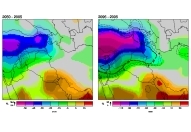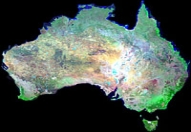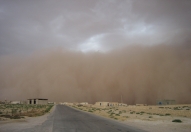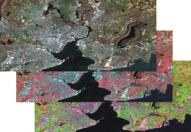Prof. Jason P. Evans
Climate Change Research Centre
University of New South Wales









Sensitivity of Groundwater Dynamics to Land Cover Change.
Ajami,H., M.F. McCabe, J.P. Evans
AGU Fall meeting, 3-7 December 2012, San Francisco, USA. Abstract
Groundwater dynamics are characterised by complex interactions between soil, vegetation and atmospheric controls on the water and energy cycles. While recharge variability is controlled primarily by precipitation rates and seasonality in arid and semi-arid environments, changes in vegetation type can significantly influence groundwater dynamics by altering land-atmosphere feedback processes. In this study, the role of vegetation on soil moisture patterns and energy fluxes at the land surface was explored using an integrated groundwater - surface water - land surface model (ParFlow.CLM) across a semi-arid catchment located in the central west New South Wales, Australia. The Baldry hydrological observatory is situated within a 2 km2 catchment comprising two distinct land cover types of pasture
and a regenerated Eucalyptus forest, overlaying a topographically flat terrain. Baldry’s unique configuration makes it suitable for a paired-catchment study seeking to discriminate the role of vegetation type on surface water-groundwater interactions. Here, the degree of land surface-subsurface coupling within the catchment was examined as a result of variability in climate condition and change in land cover types. Further, multi-criteria model evaluation was performed using groundwater level measurements and detailed land surface flux measurements obtained from eddy covariance towers, scintillometers, and stable isotopes to assist in constraining model parameter estimates.
|
|